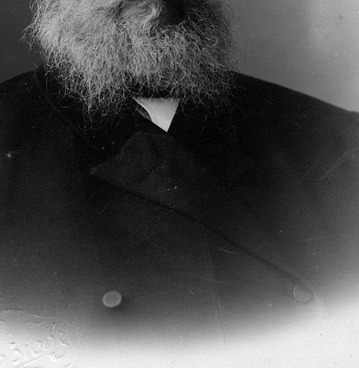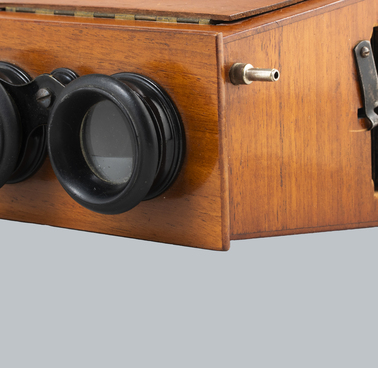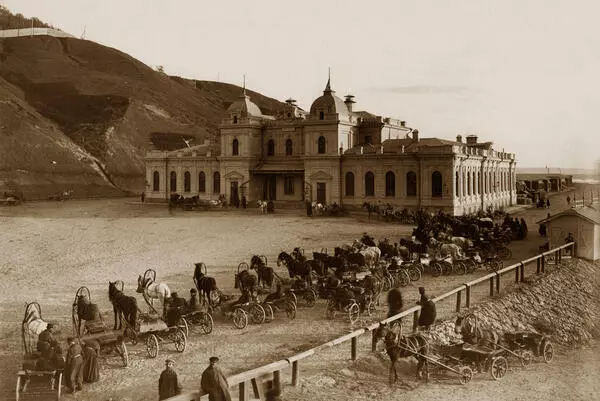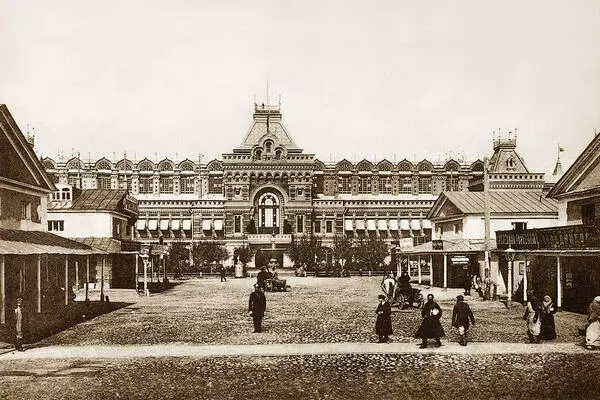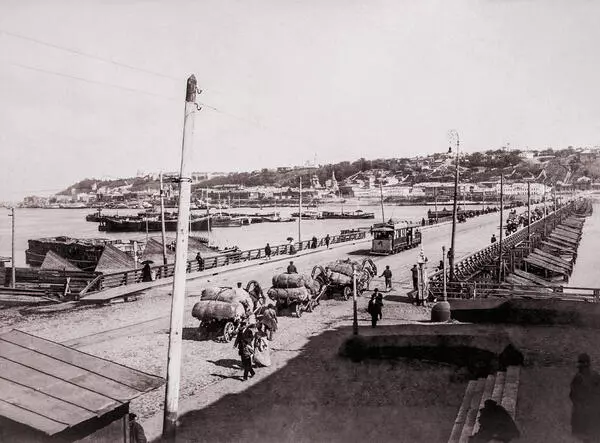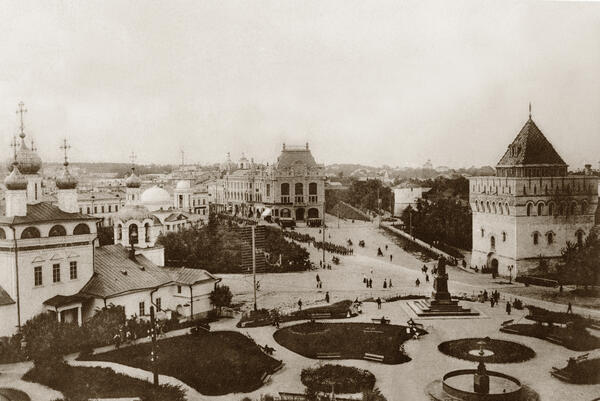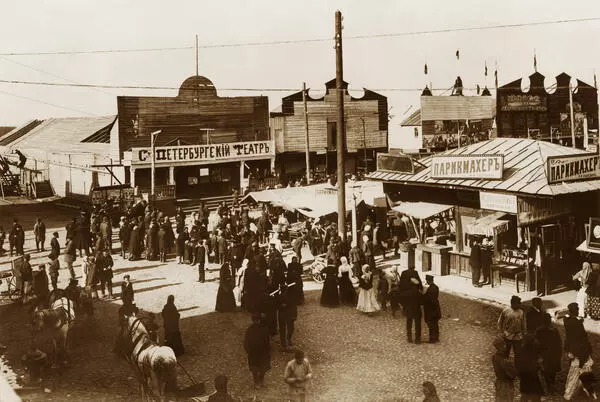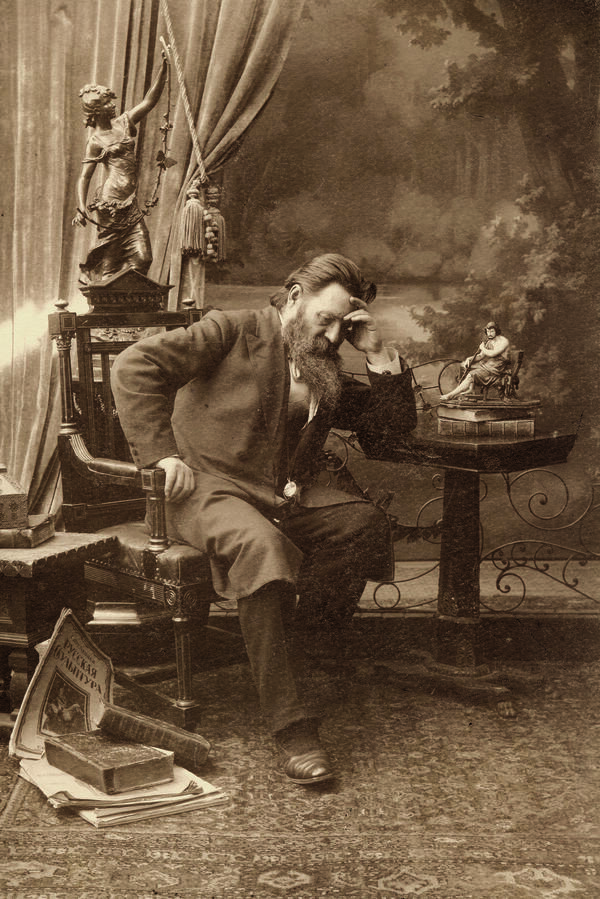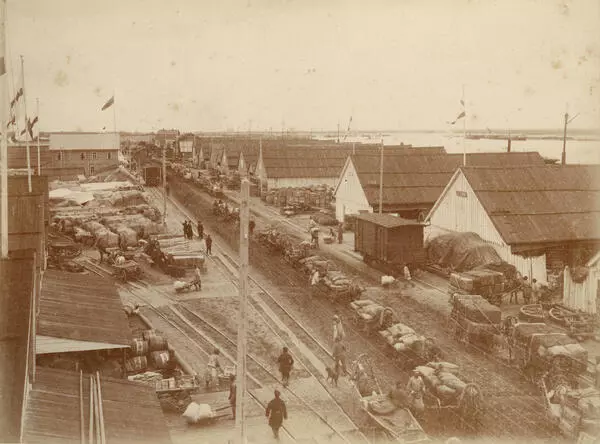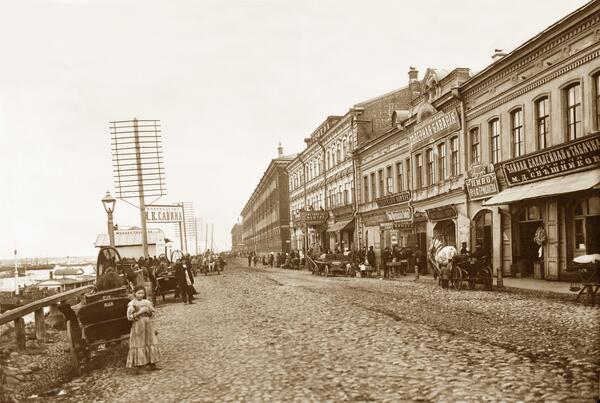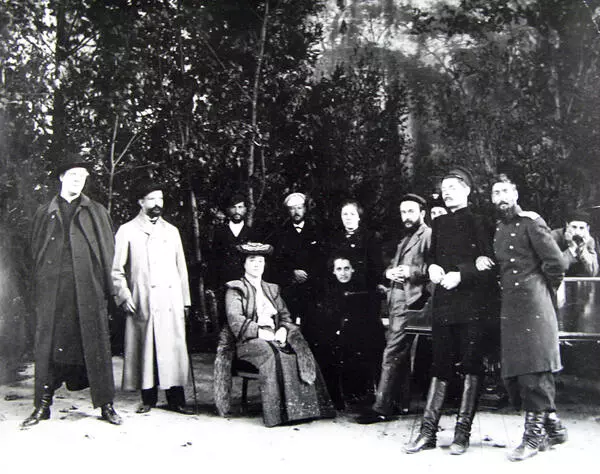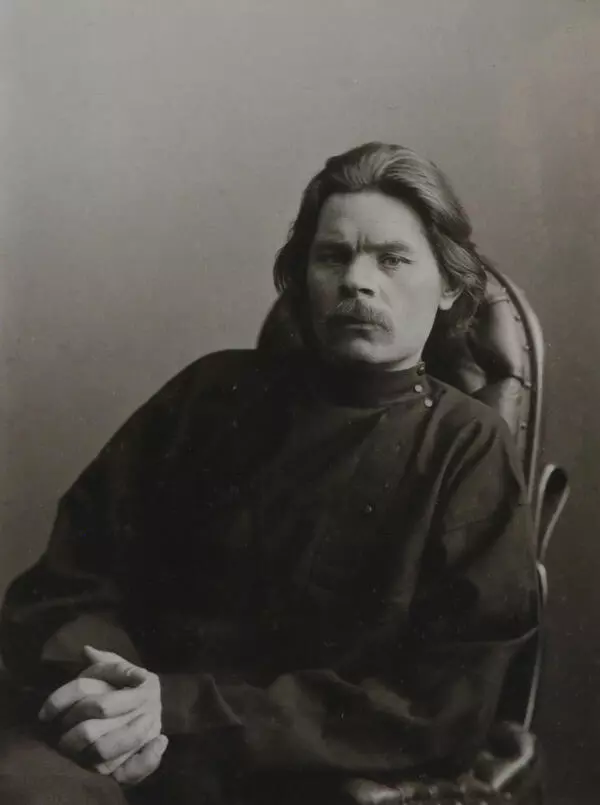On May 28, 1896, Nizhny Novgorod became the main city in Russia: the 16th All-Russia Industrial and Art Exhibition opened there. The exhibition guidebook read, “The beauty of the Volga region, the city glorious for its historical past is destined to attract the attention of all Russia yet again.” Nizhny Novgorod was the fourth city in Russia (after Saint Petersburg, Moscow and Warsaw) to have the honor of hosting one of the All-Russia exhibitions. It is worth mentioning that this exhibition was different from the others, because for the first time objects of art, which sometimes occupied entire pavilions, became exhibits.
A whole city with 187 pavilions, ponds, fountains, and an electric ring road was built. The pavilions were designed by the leading architects Alexander Pomerantsev, Gavriil Baranovsky, Leon Benois and Vladimir Shukhov. Internationally renowned Russian scientists, such as Alexander Stepanovich Popov, Kliment Arkadyevich Timiryazev, and Dmitry Ivanovich Mendeleyev took part in the organization of the exhibition. In total, the exhibition consisted of 19 thematic areas and engaged 9700 exhibitors (825 of them were from Nizhny Novgorod).
By the opening of the exhibition, the city had been transformed: new mansions were built, the Dmitriyevskaya Tower of the Kremlin was restored, two funiculars were built to connect the lower and upper parts of the city, and a new theater building, where Feodor Chaliapin performed the whole season, was erected. It was there that Chaliapin first saw his future wife Iole Tornaghi, an Italian ballerina. The exhibition presented a variety of achievements and innovations: the first streetcar, the first automobile, and an exclusive cinema showing.
In July, the exhibition was visited by Emperor Nicholas II. In preparation for his arrival, each company decorated its building with monograms of the royal couple — the letters N and A, made of trade or production goods: ironmongers made initials out of anchor chains, fishmongers — out of dried pikeperch and Caspian roach, and textile manufacturers used strips of calico.
The Nizhny Novgorod exhibitors received numerous
awards. The right to depict the double-headed eagle on their products was
granted to industrialists Bashkirov brothers, Nikolay Aleksandrovich Bugrov,
and the factory of Ustin Savvich Kurbatov. The largest plants — Sormovo and
Kulebaki — warranted this right again. A silver medal was also awarded to Maxim
Petrovich Dmitriyev, the famous Nizhny Novgorod photographer. Dmitriyev had his
own pavilion at the exhibition, which was located next to the Art Department.
After the exhibition ended, the pavilion was moved to the fairgrounds.


